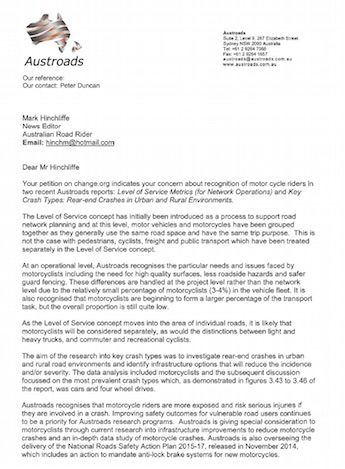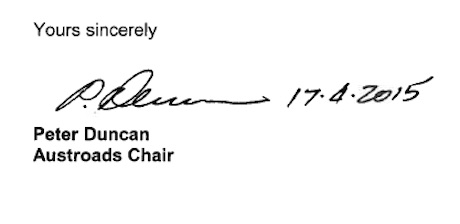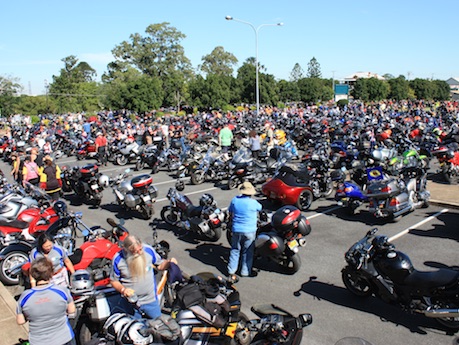Riders are statistically insignificant according to Austroads, the leading transport and traffic authority in Australia and New Zealand, a situation described by rider advocacy spokespeople as “dismissive”, “ignorant” and “appalling”.
Responding to the MotorbikeWriter petition for Austroads to pay more attention to riders when compiling important reports, chairman Peter Duncan defends their position.
He says that in a report on road network planning motorcycles have been grouped with cars as they “use the same road space and have the same trip purpose”. That’s despite the fact that riders can now legally lane filter in several states and motorcycles have a greater proportion of recreational use than cars.

Meanwhile, cyclists – with the same “footprint” as motorcycles – were treated separately in the report.
Mr Duncan also says motorcycles are a relatively small 3-4% of the vehicle fleet, but he does recognise that our numbers are growing.
On a more positive note he says that as the report leads to planning individual roads, “it is likely that motorcyclists will be considered separately”.
Defending another report on rear-end crashes, the Austroads chairman says motorcycles were incorporated in the data analysis, even though they were never singled out for any mention in the entire 129-page report.
Yet he admits that Austroads recognises riders are more exposed to risk in a crash.
“Improving safety outcomes for vulnerable road users continues to be a priority for Austroads research programs. Austroads is giving special consideration to motorcyclists through current research into infrastructure improvements to reduce motorcycle crashes and an in-depth study of motorcycle crashes.”
He also says Austroads is overseeing the National Road Safety Action Plan which proposes to mandate ABS for new motorcycles.

However, Australian Motorcycle Council president Shaun Lennard says the chairman’s “dismissive” letter is unfortunate and could have been a lot more positive if he had mentioned two Austroads projects on infrastructure that focus on motorcycling.
“It seems they don’t even know what they are doing,” he says. “What we’re looking to do is change and improve the view from within Austroads.
“It’s strange that most Austroads projects are performed by people who are employed in state roads authorities that are very proactive about motorcycles in infrastructure and transport policies. You would expect that those people would take the same level of enthusiasm for motorcycling to their Austroads projects, but in reality that’s not happening.
“We don’t just want to grumble that things aren’t as good as they could be, we want to change and improve the Austroads approach to motorcycling to be more positive and enlightening.”
Emeritus professor of transport Marcus Wigan was far less diplomatic in his response to the chairman’s reply, labelling Austroads “ignorant” and the situation “appalling”.
“The neglect of a mode of transport that the US publicly blamed for its own vulnerability is a typical attitude of Austroads safety dominated groups,” he says. “Thus the neglect of the importance of rear-end crash protection for motorcyclists being ignored although directly affecting road capacity via lane filtering as well. Also Austroads have absolutely zero competence in motorcycle traffic modelling for capacity. The famed Sidra system still uses a geometric projection as they did 20 years ago. And few, if any, of the Austrians people realise – although told personally by myself – of the excellent pcu estimation and agent-based motorcycle modelling system freely available for four years now from one of my PhD students.
“This shameful sidelining of capacity and safety issues combined is simply because the Austroads people are bluntly poorly informed and just don’t care professionally; a situation I find appalling, as I do the sheer ignorance displayed.”
Meanwhile, our petition has been signed by 387 riders and will remain live. Each time someone signs the petition, an email will be sent to the Austroads chairman as a constant reminder of the need to recognise motorcycles as an integral component of Australian and New Zealand transport with unique needs and dynamics.


